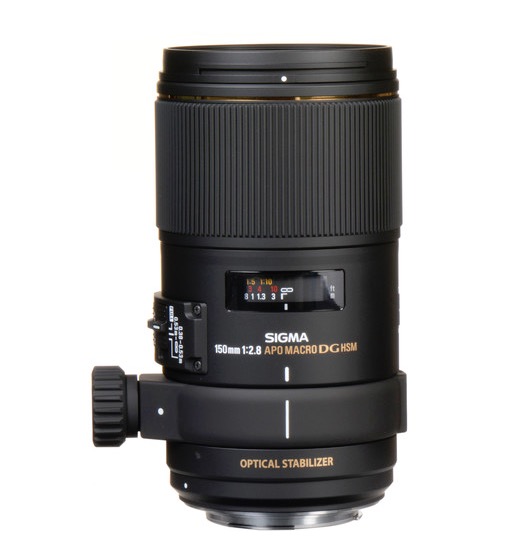-
Term:
Description: Macro Photography, also known as close-up photography, is the photography of small objects. A macro lens is a lens that offers a magnification of either 1:1, (1x) or sometimes only 1:2 reproduction.
Macro Photography

Macro Photography Technical Explanation
Unfortunately, in photograhy the terms “macro” and “micro” and “magnification” are often used inaccurately. Some photographers may use the phrase “high magnification” to describe macro photography, when in fact most macro lenses only reach 1:1 reproduction, or 1x magnification. This means that a 5mm long grain of rice would be perfectly reproduced by the macro lens as 5mm long, when the image hits the camera sensor.

What is Lens Magnification or Reproduction?
Lens magnification is actually a characteristic of the close-focusing capability of a lens, and nothing else. In other words, almost any lens of any focal length could technically be made into a 1:1 macro lens, the only difference would be that a telephoto lens would achieve 1:1 reproduction when the subject is quite a distance away from the camera, where as a medium or wide-angle lens that reaches 1:1 reproduction would have to have the subject mere inches from the lens. There is of course a practical limit to which focal lengths are conducive to 1:1 reproduction, which is why most 1:1 macro lenses are in the range of 50mm to 150mm or 200mm.
Also, optical magnification is independent from a camera’s sensor size and resolution. A lens that does 1:1 macro on a full-frame 24 megapixel sensor, is still a 1:1 macro lens on an APS-C 24 megapixel sensor.
However, the resolving power of the sensor (how tightly the pixels are crammed together) does indeed influence the effective magnification of the camera system as a whole. Therefore, having a higher resolution sensor, or a smaller sensor of the same resolution, will allow a macro image to resolve more detail. Unless the lens itself is simply not sharp enough optically, for such a high-resolution sensor.

Macro versus Micro
Most lenses that achieve 1:1 reproduction are named macro lenses, however Nikon uses the term Micro to describe their 1:1 reproduction lenses. This is because of the official definitions of the two words, and how they actually relate to lens magnification or reproduction.
Outside of photography, “macro” means large, while “micro” means small. In the realm of photography and camera lenses, some manufacturers used the term “macro” because they wanted to denote a lens that could make small things appear large, despite the fact that most macro lenses do not exceed 1:1 reproduction, and therefore are not actually making the subject “larger than life”, but merely “life-size”. Nikon, a company that also makes microscopes, used the term “micro” to describe its lenses that can photograph very small things.

In case you were wondering, there is indeed one lens that can exceed 1:1 reproduction (1x magnification) without any adapters or other accessories, the Canon MPE 65mm f/2.8 Macro, a lens that can ONLY photograph subjects at 1-5x magnification.

Other macro lenses can exceed 1:1 reproduction, of course, when used in conjunction with accessories such as extension tubes or magnification filters.
Related Articles to Macro Photography Definition
Inspirational Macro Flower Photography Portraits + Tips
Up for a challenge? Try to NOT be inspired by these macro flower photos.
The 2020 Macro Art Photo Of the Year Just Announced Its Winners And The Photos Are Breathtaking
Macro photography has always intrigued us, and rightfully so- to see any subject with an extremely close-up view is to…
Laowa Launches 50mm f/2.8 2X Ultra Macro APO for MFT Cameras
Venus Optics just announced the release of Laowa 50mm f/2.8 2X Ultra Macro APO Lens. The new 50mm lens is…
Go Behind the Scenes On A FaceTime Photoshoot with Anita Sadowska
In this BTS video, Anita decided to have some fun while staying at home and did a FaceTime Photoshoot! There were many challenges and the image quality is more than questionable but we had so much fun!
Lensbaby Launches The Velvet 28 Wide Angle Lens
Lensbaby Launches versatile Velvet 28, a lens built with adventure, travel, street photographers & videographers in mind
Backyard Macro Photography Made Me Fall In Love With The Art | My COVID-19 StayHome Story
I was always anti-social as a natural habit. Actually, it was backyard macro photograph that gave me a creative passion, and helped me interact more with other people!
5 Things I Learned From The Fstoppers Mastering Macro Photography Tutorial by Andres Moline
I’ve always been a fan of and admired the beauty of macro photography, but honestly, I have never truly known…
Nature TTL Photographer of the Year 2020 Competition Winners Announced
An Incredible wildlife drone shot takes the prestigious nature photography prize in the inaugural 2020 Nature TTL Photography Awards.




Get Connected!